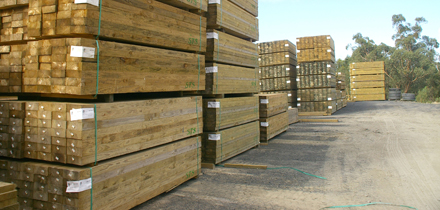
The global wood fiber prices indices continued down in the 1Q/16 with the softwood price index being at its lowest level since 2006, reports the Wood Resource Quarterly. Sources: Timberbiz, Scoop
Both the HFPI and the SFPI price indices fell in the 1Q/16 with generally lower prices in Europe, Canada and Russia partly because of weakening currencies against the US dollar.
For many countries, current prices are at their lowest levels in almost 10 years.
Wood costs for the pulp industry have been falling steadily worldwide for almost five years with hardwood fiber prices declining the most, according to the Wood Resource Quarterly (WRQ).
The Hardwood Wood Fiber Price Index (HFPI) fell by 0.6% in the 1Q/16 mainly because of lower prices for hardwood pulplogs in Russia, Eastern Canada, France and Germany.
The HFPI has been on a consistent decline the past few years with the current index being 29% lower than its record-high in 2011.
The biggest price drops since the peak of the HFPI index have mainly occurred in countries with fast-growing plantations such as Chile, Brazil, Australia and Indonesia.
The price declines have entirely been the result of a stronger US dollar, with hardwood log costs in the local currencies going up over 25% in countries such as Brazil, Chile, Indonesia and Russia.
Softwood fiber prices fell in a number of countries throughout the world in both local currencies and in US dollar terms in the 1Q/16, reports the WRQ in its latest issue.
The downward price trend that started in Europe in early 2014 has continued, although in some markets, prices are starting to level out and the bottom might have been reached.
The biggest price declines quarter-over-quarter occurred in Russia, Canada, France and New Zealand.
The Softwood Wood Fiber Price Index (SFPI), dropped 1% in the 1Q/16 from the previous quarter, which was its lowest level since the 1Q/06.
The only region that has experienced an increase in wood fiber costs the past few years is the US South, where average softwood pulplog prices in the 1Q/16 were 21% higher than in 2012.





